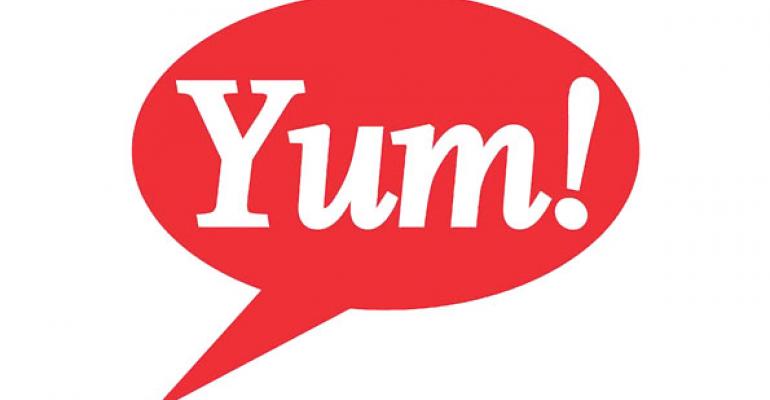Yum! Brands Inc. is still placing its future in China, with plans to build more than 700 restaurants there in 2015, despite food safety scares the past two years that have hit the company’s locations hard.
Getting China unit volumes back up to 2012 levels could generate $1.7 billion in revenue and $600 million in profits, executives of the Louisville, Ky.-based company said during its fourth-quarter earnings call Thursday.
Same-store sales in China fell 5 percent in 2014, including a 16-percent decline in the fourth quarter — limiting Yum’s China business to 1-percent growth for the year, despite more than 700 new units. In 2013, Yum’s China business declined by 4 percent, and same-store sales fell 13 percent.
Yum said sales in China will remain soft in the first half of the year, but will accelerate dramatically in the second half, with a combination of marketing, new menu items and what executives called “the benefit of time.”
“I’ve been with Taco Bell. I’ve had my share of incidents,” Yum CEO Greg Creed said, referring to his previous role as Taco Bell CEO. “I know what these are like. We do know that great, iconic brands always recover. We know what we have to do.”
Investors seemed to accept the company’s logic: Yum’s stock rose about 2 percent after the call.
China accounts for more than 52 percent of Yum’s total revenue, and the company is still growing rapidly there despite its problems.
In December 2012, a combination of avian flu and a poultry supply issue hammered Yum’s China sales in fiscal 2013. Sales surged in the first half of 2014 — same-store sales rose 15 percent in the second quarter — but allegations in July about a different supplier sent the company’s sales south again. They have been slow to recover since.
Executives blamed the two consecutive years of supplier scares for the slow pace of sales recovery. Still, they said the brands’ consumer perception scores have improved in China. They cited the rapid improvement of sales in the first half of 2014 for their faith in projections that they will improve again later this year.
“We don’t have to go back too far in history to find resilience in our business,” Yum chief financial officer Patrick Grismer said. “We’re in China for the long term. The last two years, while painful, don’t erase 10 years” of growth in the market.
Creed added that the company is taking steps to ensure that its supplies are safe. He mentioned closed circuit televisions and whistleblower programs. “We’ve put a lot of things in place,” Creed said. “One thing I can promise is it will never happen again.”
The China results overshadowed strong performances at both Taco Bell and KFC in the U.S., as well as a disappointing launch of a new menu at Pizza Hut in the U.S.
At Taco Bell, fourth-quarter same-store sales rose 6 percent, including a 7-percent increase in the U.S., largely due to breakfast. The chain introduced breakfast last year, and by the fourth quarter it accounted for 6 percent of its business.
“Taco Bell continues to fire on all cylinders,” Creed said.
Taco Bell is taking some ideas from overseas locations, he said. For instance, Taco Bell has an open kitchen design at a restaurant in Bangalore, India, that it plans to test at a U.S. restaurant this year.
Taco Bell has also seen results with its mobile app that enables both ordering and payment. The app has been downloaded 2 million times so far.
Like Taco Bell, Pizza Hut made big menu news in 2014 with its “Flavors of Now” menu, which launched in November. However, unlike Taco Bell, Pizza Hut’s sales remain weaker than executives expected, with U.S. same-store sales flat for the quarter.
The menu resonated with younger consumers, Creed said, but he acknowledged that early messaging didn’t address the brand’s existing, heavy users.
“We’ve got to make sure that we don’t lose the abundant customer,” Creed said, adding that the new menu was getting 90-percent repeat business. “We’re happy with where we’re going to take this brand,” he said.
Meanwhile, KFC reported a strong quarter outside of China and India, including a 6-percent improvement in U.S. same-store sales, its best domestic performance in years.
Contact Jonathan Maze at [email protected].
Follow him on Twitter: @jonathanmaze

